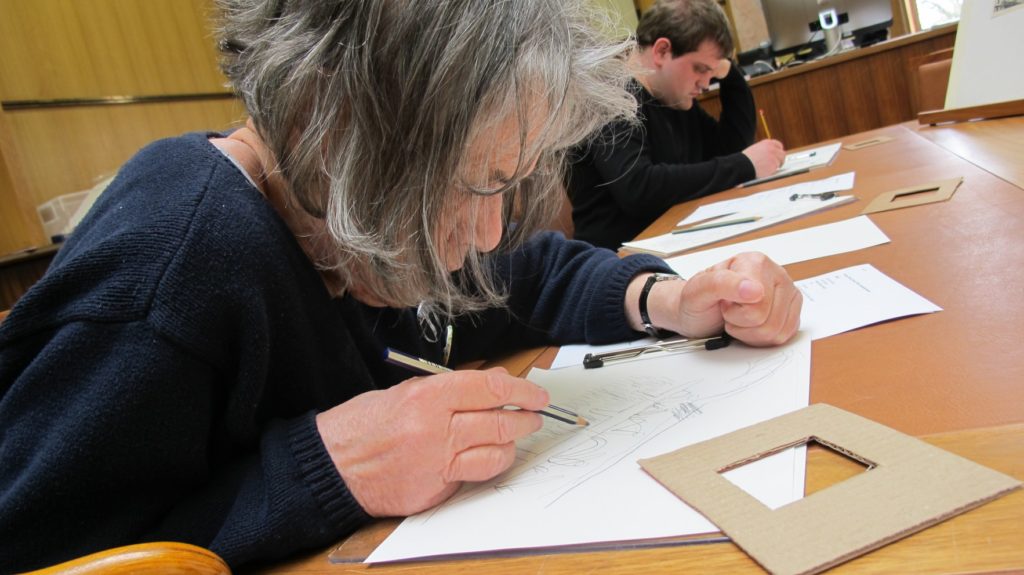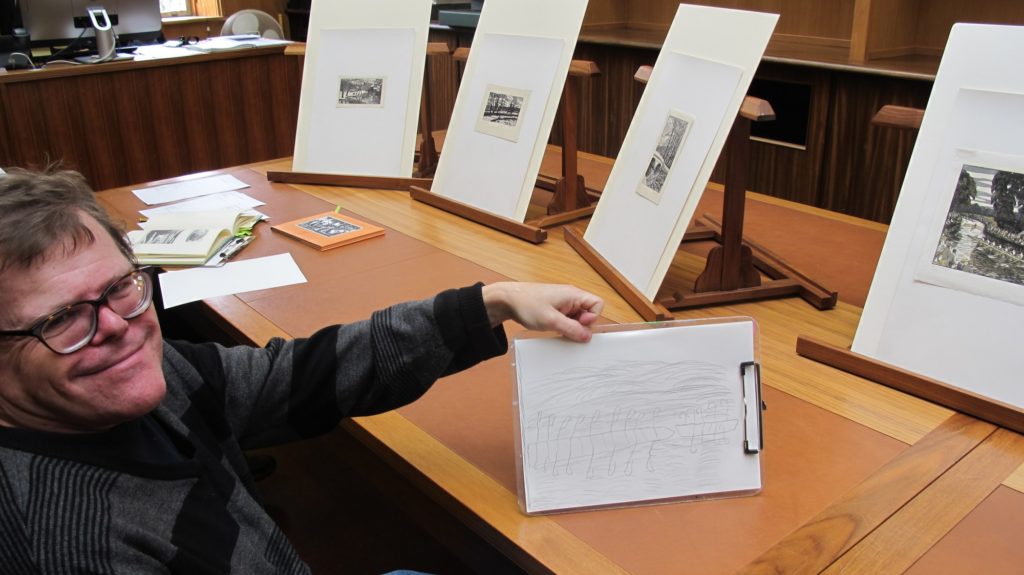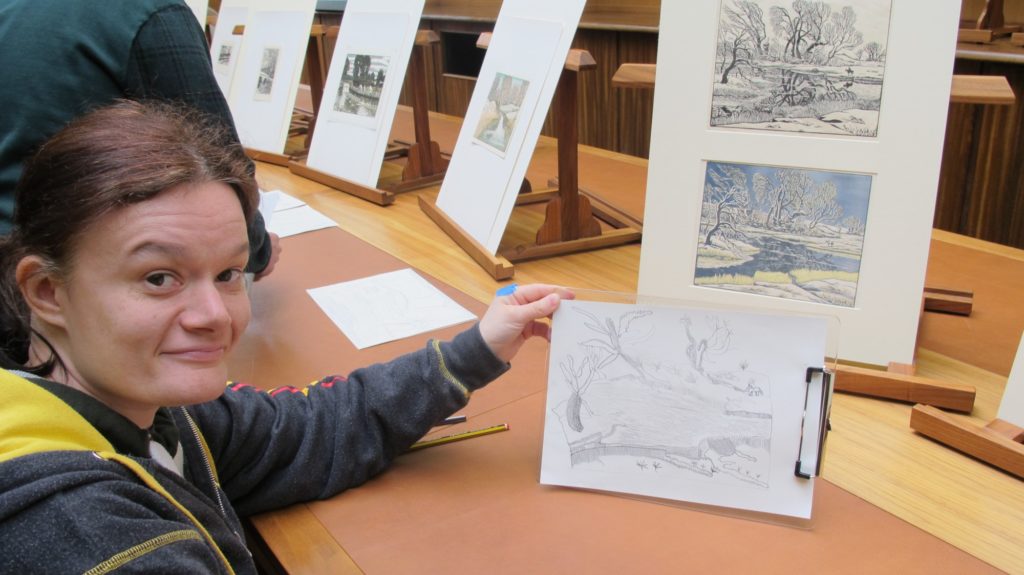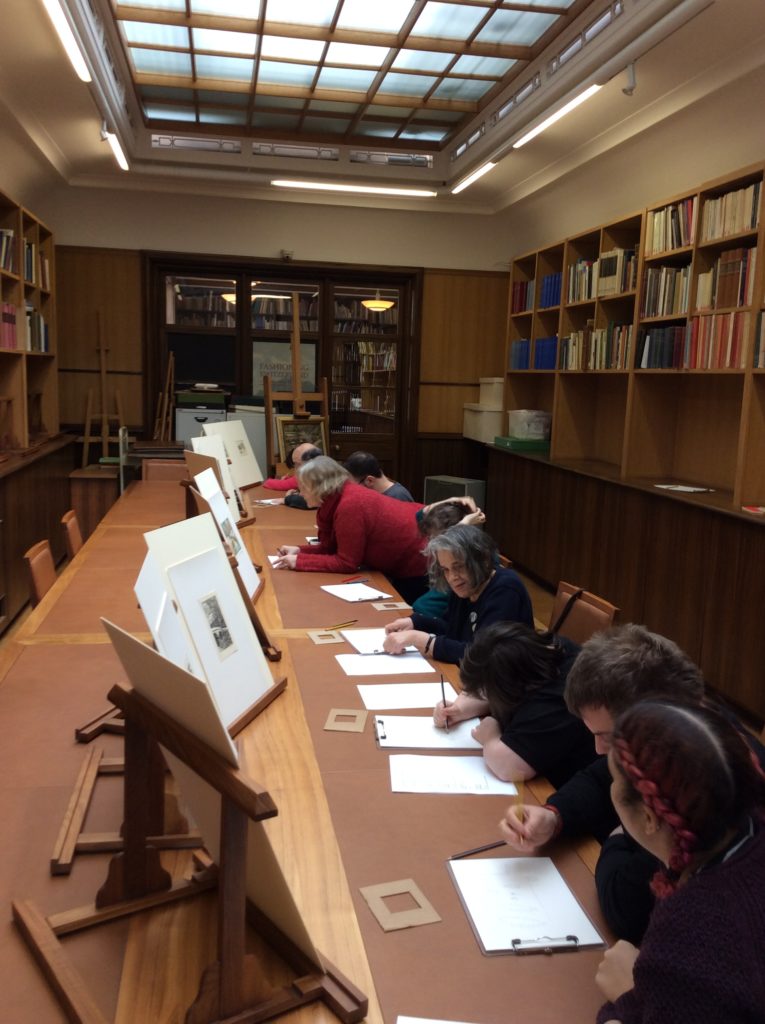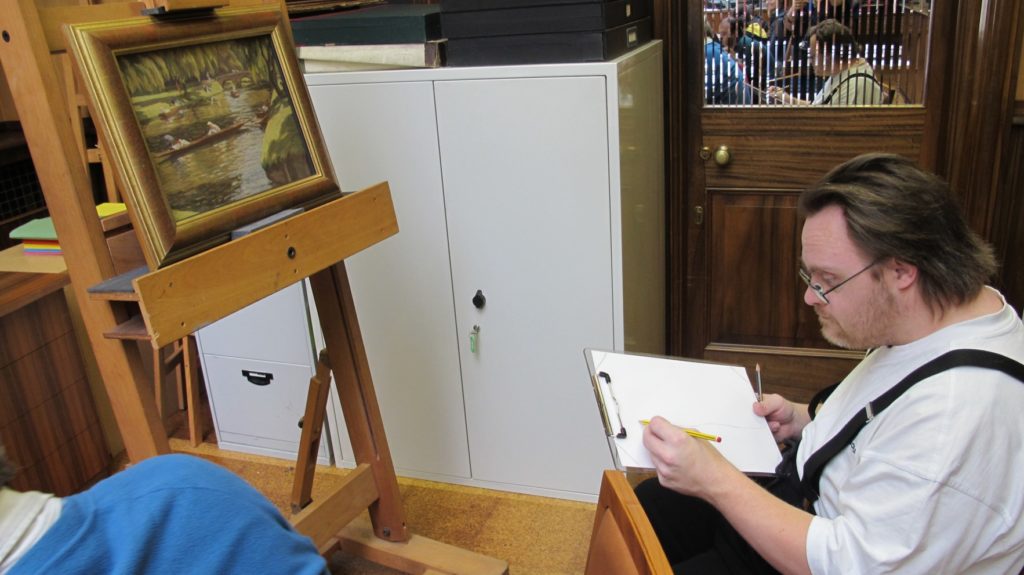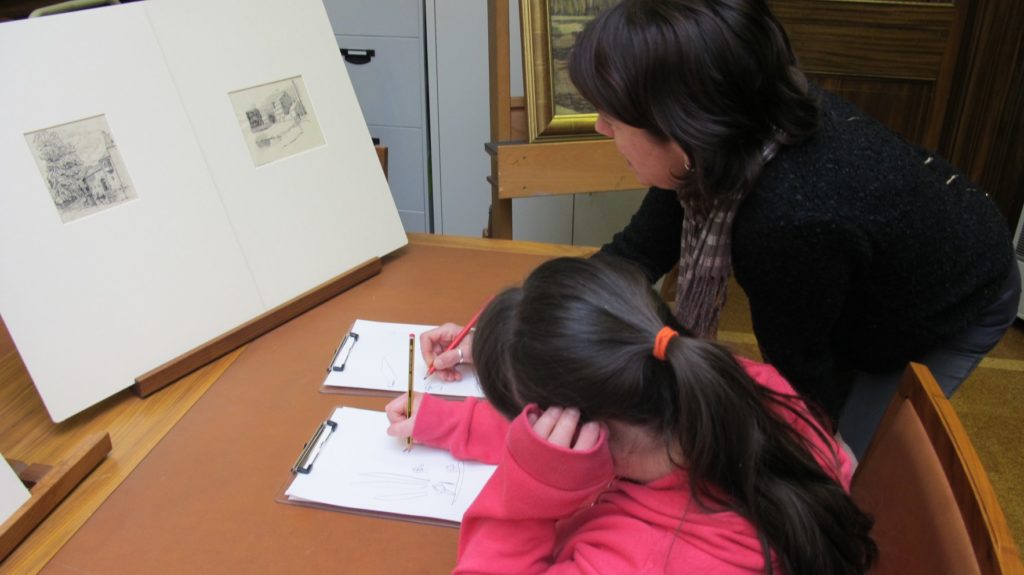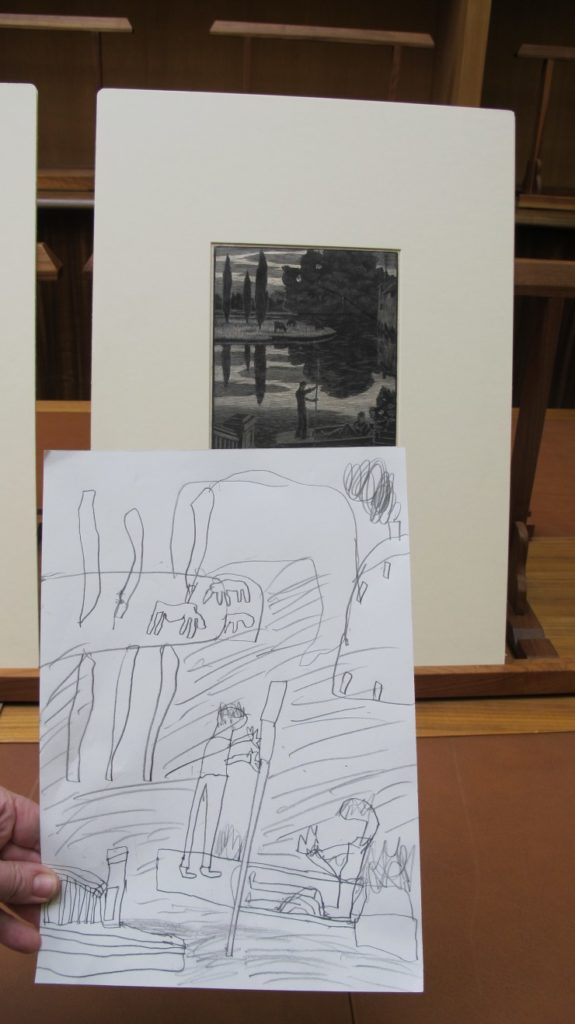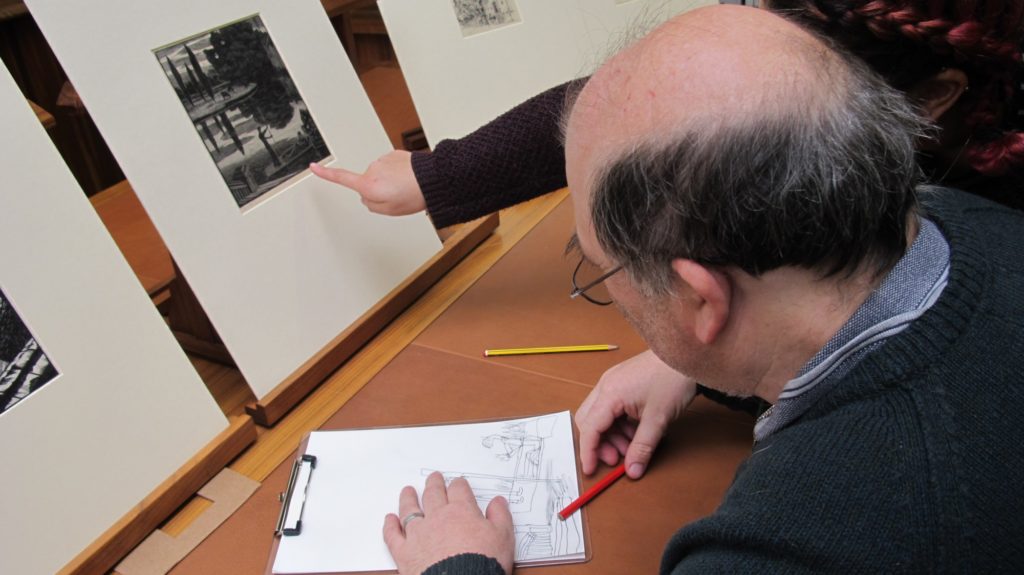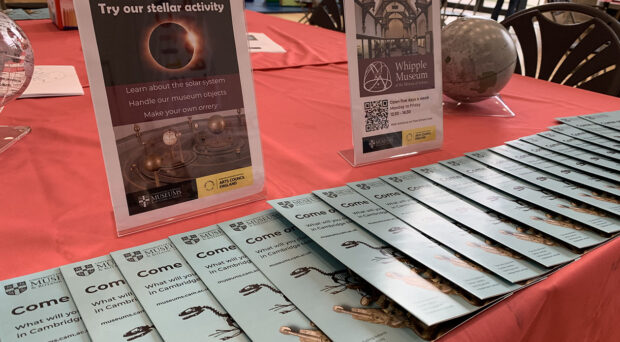Alison Ayres, Education Assistant at the Fitzwilliam Museum, shares her experience of working with students from local charity Rowan to take inspiration from art work by Gwen Raverat as part of their River Stories project.

Rowan is a Cambridge based charity which provides a creative environment for learning disabled adults. Staff and volunteers provide support in the studios where students can work with wood, ceramic, print, textiles, mixed media, music and drama.
Staff and students from Rowan often visit the University Museums in search of inspiration for their art work, projects and commissions. River Stories is a project funded by the Heritage Lottery Fund, enabling the students to learn about the heritage of the River Cam and create art work in response to their discoveries. Anna Kendrew, a tutor at Rowan, contacted us to ask if the Fitzwilliam Museum has any works on display related to the River Cam, which could be a source of inspiration for the students.
The Fitzwilliam Museum has a large collection of Gwen Raverat’s drawings and wood engravings, many depicting life on and around the River Cam in the first half of the 20thcentury. These light-sensitive works are on public display but can be seen by appointment, in the Graham Robertson Study Room. I met with Hollie Drinkwater, one of the supervisors for the study room, to choose art work for Rowan’s visits from the Raverat portfolios. We chose 13 original wood engravings and one oil painting of punts on the river. A maximum of 15 people can gain access to the study room at any one time so we booked the room for two mornings to make sure as many of the group as possible could experience the works.\
Gwen Raverat was the granddaughter of Charles Darwin and her childhood home was on Silver Street overlooking the Mill Pond, it is now part of Darwin College. Raverat’s drawings and wood engravings of Cambridge are beautifully observed depictions of life on and around the River Cam. Some views are little changed while others provide a glimpse into the past when the Mill Pond was surrounded by working mills including the Kings Mill which stood on the site of the Anchor pub.
The Graham Robertson study room is a peaceful and intimate space where the students could sit in front of the works displayed on table top easels. This enabled them to get close and really appreciate the detail and rich variety of marks and textures that Raverat had used in her engravings. They spent the morning drawing their favourite images. The staff supporting the visit commented on how the secluded calm atmosphere of the room really helped the students to concentrate and engage with the art works. Both the students and staff thoroughly enjoyed their visit and produced some wonderful drawings which they took back to Rowan to inspire their art work for the River Stories project.
In 2016 Rowans building underwent a complete restructure of the internal layout. The five existing studios were totally refurbished with the addition of two new Studios and an adult changing area. The new and improved facilities are available for community use.
If you would like to find out more about Rowan they are having an open day on Saturday 8th April, see their website for details.
If you would like to find out more about the Graham Robertson study room email: fitzmuseum-studyroom@lists.cam.ac.uk


